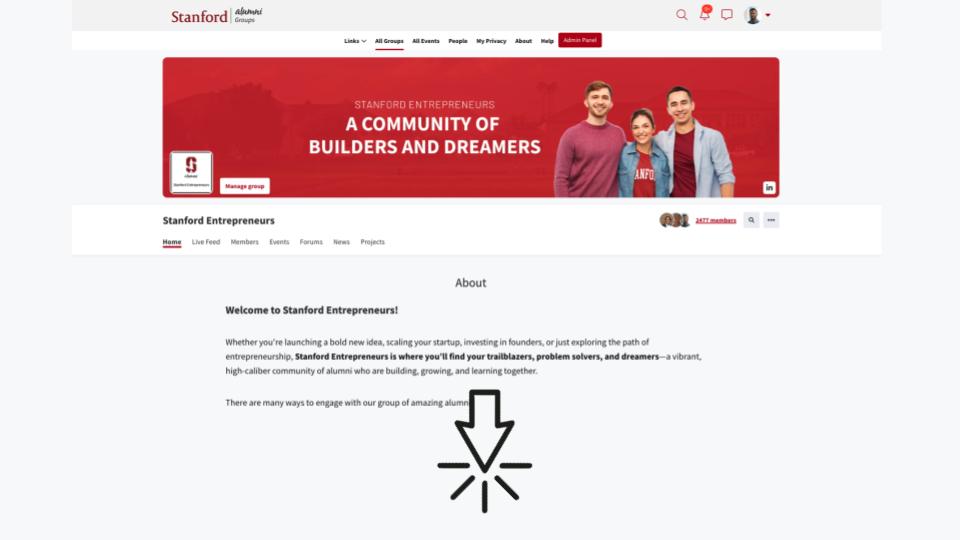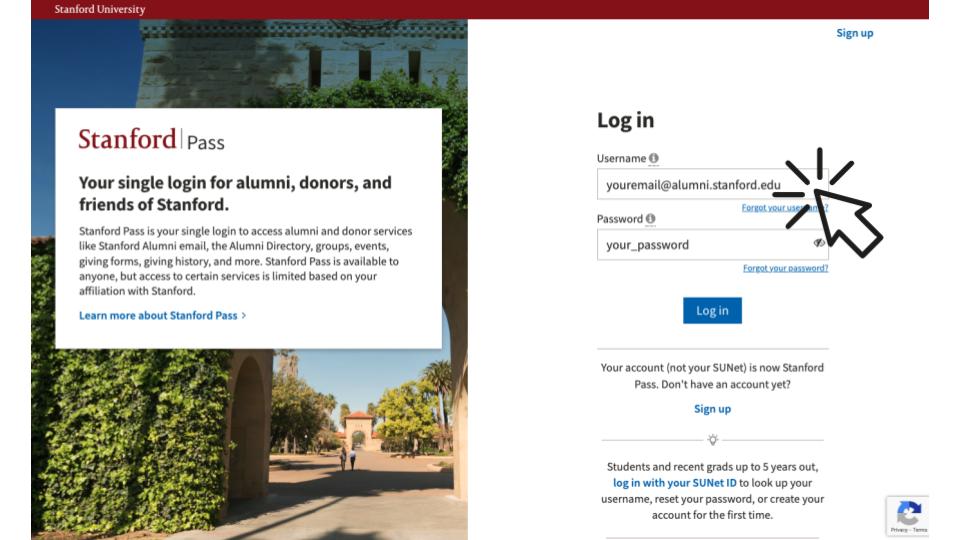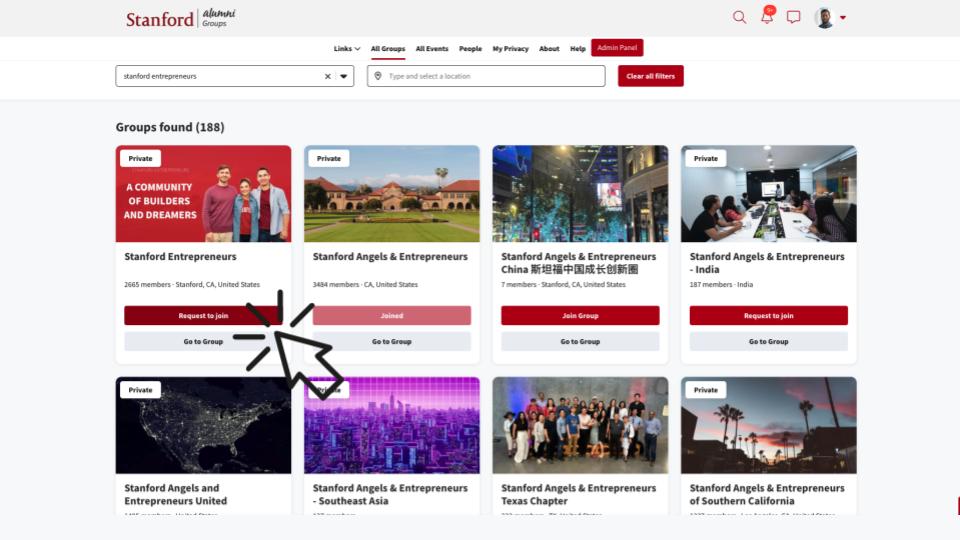20 Questions with Founder Pablo Hernandez
Founder of Build It For Me AI, and Tech Director of Stanford Entrepreneurs, Pablo Hernandez shares his entrepreneurial insights with our community, starting with his journey from Uber to entrepreneur.
MEET PABLO
🇲🇽 Hometown: Born and raised in Mexico City
🚀 Claim to fame: Launched an AI-powered website builder and an app for self-guided audio tours
💼 Previous gigs: Uber, Culdesac, Stitch Fix, Earnest
🎓 Stanford degree: MS in Management Science & Engineering (’20)
💡 Biggest lesson as a founder: “You have to wear every hat—and it’s humbling.”
😎 Fun fact: Started an NGO at 14 and led a team of people 8 years older
🧠 On productivity: “Every day starts with a whiteboard.”
📣 Startup advice: Launch now. Even if it’s ugly. Even if it’s small.
⛑️ Surprising hobby: Training to become EMT certified—just for the challenge
TOP 3 TIPS
💬 What’s the best entrepreneurial advice you’ve ever received?
I think the best advice I got was from one of the ETL talks at Stanford. One of the visitors in the ETL talk said, “The next thing you start is not the last thing you’re ever going to work on.” So don’t try to make your next idea or your next venture satisfy every single criterion you want your whole career to be about. As you grow, you’re going to do so much more in your career, and you can always go back to what you want.
💬 What the worst Entrepreneurial advice YOu ever Received?
I think a lot of people equate success in entrepreneurship to fundraising. I took a lot of classes focused on how to raise money from VCs, how to build the perfect pitch deck. And I think really focusing on venture capital approval as your idea of success can be very damaging. My advice is to always listen first to customers—above anyone who would never use your product, like an investor. If the product-market fit is there, the investors will come to you.
💬 What would you tell someone thinking of leaving their job to start a company?
First: make sure it’s the right time in your life financially. Fundraising can take a while, so ideally you have savings. If not, start it as a side project and only jump when you have enough traction. Second: launch now. Put something in front of customers right away, even if it’s ugly. That early feedback is crucial. Waiting too long and then realizing no one wants it—that’s painful.
Entrepreneurial Journey
💬 What DOes YOur company do?
I started a company called Build It For Me. We’re using AI to make people’s lives easier. This year, we started with a product that helps WordPress users manage their website—so for non-technical users, it helps them build content, modify their website, without having to learn how to code. I’m also launching a new tool—completely unrelated— called Audio Guide It that’s an iOS and Android app for audio guides. When you’re visiting a park, landmark, or museum, you can ask it to generate an audio guide, and it will explain what you’re seeing.
💬 You said “we” Who else is involved?
I always say “we.” It’s really just me. I’m a solopreneur. I have a couple of friends and family who help out, but it’s mostly me.
💬 What inspired you to start it?
A couple of years back I was working as a product manager doing growth, which involves managing tools that help companies grow—like websites, APIs. Then tech hit a rough patch, and after layoffs, my six-person engineering team was just me and one other engineer. I started using ChatGPT to solve some of the tickets we had, and I realized how much more you could do when you use AI. So I started tinkering with GPT-4 to make these tools easier to use, and that’s when I saw the opportunity.
💬 Was that a hard jump to make?
I’ve always wanted to start a company. I’ve started a lot of things since I was 14. I was excited to do my own thing. The biggest thing for me was making sure it wouldn’t affect my family. My wife has a full-time job in tech, and she sponsors my visa. We use her health insurance and all that. So just making sure that the timing worked for both of us—it was a risk we took as a couple.
💬 What would YOUr Wife say about you being an entrepreneur?
She’s super supportive. She always gets surprised when I build something—like, “Oh, that’s amazing!” It’s the most important validation I can get. She gives me great feedback too—she’s also a product manager.
💬 How did you get your first customers?
I worked for eight months on a product that people hated. No one wanted it. So I learned a lot about being lean. The first paying customer I had was from an idea to help small and medium businesses create a digital presence—websites, SEO, content, even ads. I knocked on doors, talked to friends, pitched people I knew. It started more like consulting, and I productized it over time.
💬 Who’s your ideal customer?
A small or mid-sized company, non-tech, usually someone in sales or marketing who wants to create an online presence but doesn’t have tech support or a big agency budget. They’re frustrated by the internal limitations. This product is part support from me, part DIY.
💬 Does AI ever become a disadvantage?
Yeah, that’s a great question. A lot of people are tired of the term “ChatGPT,” because it’s just new tech being integrated into tools. But what will determine who wins is who builds the best UI. Not every AI use case is best served through chat. For example, if you want to change your website color from blue to red, you don’t want to describe it—you want to use a color picker. The winners will be those who build the best user experience around the AI.
💬 How is it going now? What’s the hardest part?
The biggest challenge is getting enough feedback to iterate and find product-market fit. I wouldn’t say I’ve found it yet. I’m still in that phase—figuring out which opportunities are big enough to be lucrative, and whether I need VC money. Ideally, I want to find product-market fit without needing to raise money.
💬 Are you bootstrapping?
Yes, mostly. I raised a small friends-and-family round.
💬 Is this your first company?
Technically it’s my second. Before COVID, my wife and I tried to build LinkedIn for blue-collar workers. Then the pandemic hit. Short-lived, but great learning.
💬 What surprised you about being a founder?
When you work at a company, you can focus on just your area. As a founder, you have to be a great PM, designer, marketer, salesperson. And also do your taxes and pay credit cards. I’ve had to appreciate how hard those other roles are, and how unskilled I can be at them.
💬 Do you think you’ll stay a founder?
I love it. I love solving problems—my house is full of Rubik’s cubes, jigsaw puzzles, that kind of thing. That said, I wouldn’t rule out returning to a company if I needed a break. But I’m happy doing this.
💬 If you did go back to a company, what would interest you?
Anywhere I can solve interesting problems. I love edtech, I’m a lifelong learner. I’m also interested in the housing problem in the U.S., especially in California. So working in product at a company like that would be great.
Stanford Experience
💬 You got your Master’s at Stanford, right? In something tech-ish?
Yeah, it’s a program called Management Science and Engineering. It’s a good blend of technology—whatever that means for you. It could be biology, energy. In my case, I focused on computer science and management.
💬 Is that a one- or two-year degree?
It can be done in nine months, but I did it in a year, which is the most common.
💬 Why did you apply? Where were you in your career?
I studied chemical engineering in Mexico. Then I worked at Uber for four years helping launch and grow the company in Latin America. After working in operations, I realized how much impact the tech side of a company has, and I wanted to be on that side. I needed to get stronger technically and from a management perspective. Stanford was a break that let me gain knowledge and skills I didn’t have before.
💬 Was it what you expected?
It was fantastic. A lot of things were unexpected, and a lot exceeded expectations. I really appreciated the breadth of learning. I remember biking across campus one weekend and someone said, “Oh, you can’t enter here, Bill Gates is giving a lecture.” And I was like, okay, I’ll just join. It was that kind of serendipity. My time and growth there were amazing.
💬 When did you finish?
From 2018 to 2020. My last exam was right when they said, “You can’t come in person because of this thing called COVID.”
💬 Does the degree actually help? Would you be where you are without it?
People ask me that a lot. If you think going to Stanford will lead to C-level offers right after graduation—like, “Hey, we need a new CEO” just because you went there—that’s not going to happen. But for me, it was totally worth it. I learned things I never had time to learn. If you think of your career like a mountain instead of a ladder, sometimes you need to traverse sideways to keep growing. That was Stanford for me.
Life, Routines & Reflections
💬 Any startup voices or writers you follow closely?
I really enjoy reading and listening to Stratechery by Ben Thompson. He has deep insights on tech. For AI, I follow newsletters like Superhuman AI and TLDR. I probably get 20 newsletters a day.
💬 Any mentors or people who’ve helped you along the way?
A couple from the Stanford STVP program: Alex Coven and Heidi Roizen. They’ve both helped a lot when I was struggling with decisions. And one of my investors, Juan Jose Hernandez, spends the most hours with me thinking through what to do next.
💬 How do you spend a free Sunday?
We have a small dog, so we take him out to the park. I rock climb, but I now have a new perspective on fitness—if I do the same thing, I get bored. So I try to do five different types of workouts during the week: boxing, bike rides, hikes, etc. It helps get the stress out.
💬 Do you feel that’s important as a founder?
Totally. Managing stress is crucial. Everything falls back on you, so you need a way to release that energy.
💬 Other stress relief habits?
I meditate every morning. I also take breaks throughout the day to walk the dog. Dogs are great because they force you to go outside and reset. It’s a small thing, but it really helps.
💬 Would childhood friends be surprised to see you as an entrepreneur?
Not at all. I started an NGO when I was 14, bossing around people eight years older than me. I’ve always liked organizing and building things.
💬 Any productivity hacks?
A big whiteboard. Every morning I write my top priorities. I keep mornings for unstructured stuff—emails, metrics, etc.—and afternoons for deep work and coding.
💬 What fuels your day? Coffee, snacks, habits?
Not so much drinks, but I love cooking. After my morning chaos, I look forward to making lunch. It’s my reset moment and something that brings me joy.
💬 Any hidden talents or passions?
I’m more about breadth than depth. I try a lot of things even if I’m not the best. I’m doing an EMT certification right now. I bike, camp, hike. I’m always learning something new.
💬 THANK YOU FOR YOUR INSights PABLO!
I’m always happy to share with the amazing Stanford community. After all, I’ve learned so much from everyone here!







